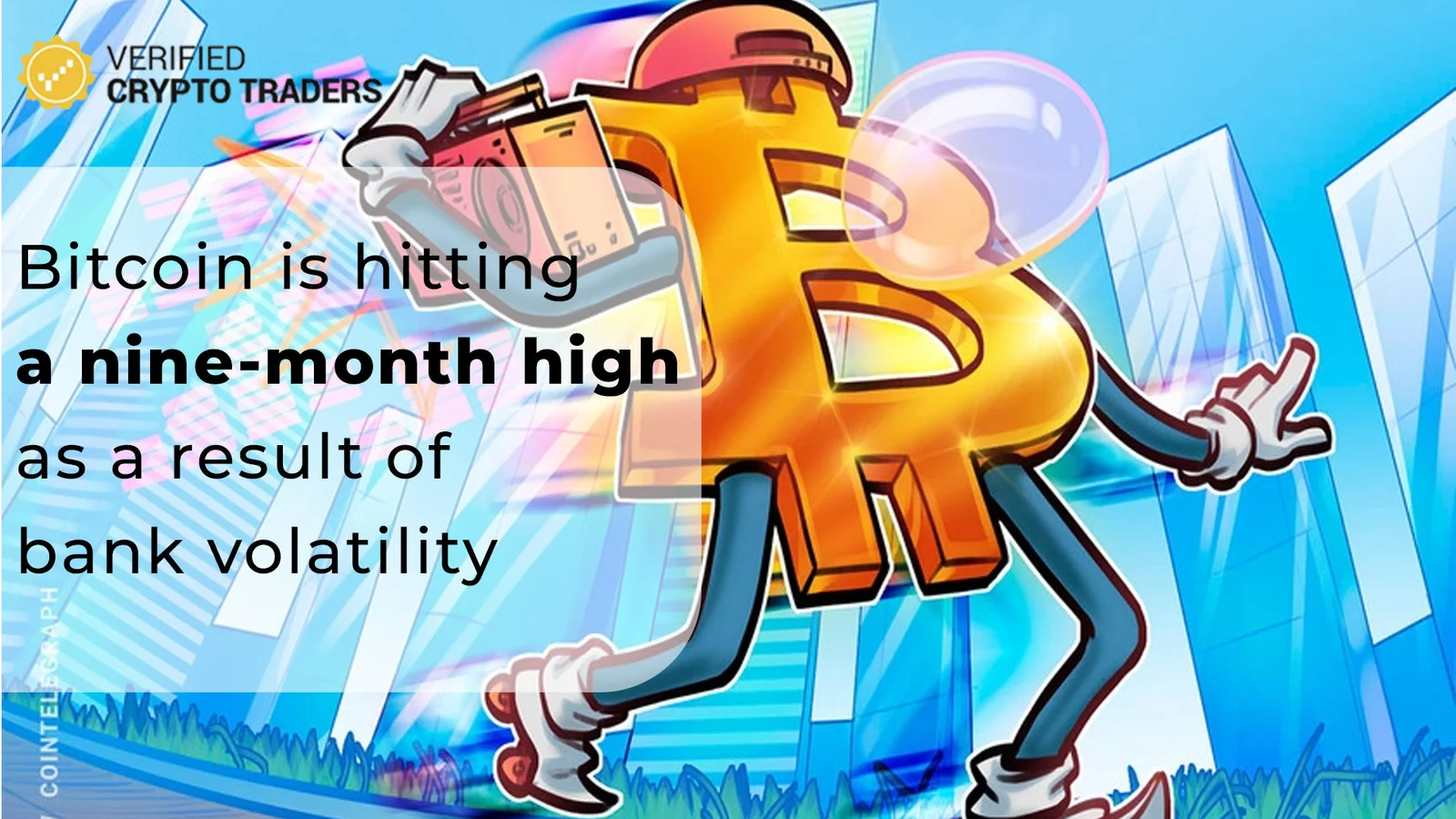
Table of Contents
Bitcoin, the world’s largest cryptocurrency, surged on Sunday to its highest level in nine months, as global banking turmoil led investors to seek refuge in the digital asset.
The price of Bitcoin climbed to $62,132, the highest since May 2022, according to data from CoinDesk. The rally comes amid increasing concerns about the health of traditional banking systems, as well as growing demand for digital currencies as a store of value.
The turmoil in the banking sector has been driven by a series of high-profile scandals, including the collapse of Greensill Capital and the implosion of Archegos Capital Management. These events have raised questions about the stability of traditional financial institutions and sparked fears of a broader systemic crisis.
Bitcoin, which was created in 2009 as a decentralized alternative to traditional currencies, has long been seen as a safe-haven asset, immune to the problems of centralized financial systems. Its decentralized nature, combined with its limited supply and high demand, has made it an attractive investment option for many investors.
Recent Article
Asian markets extend risk rally as ECB raises rates and us banks deposit billions
The recent surge in the price of Bitcoin has been driven by a number of factors, including growing institutional interest in the asset and increased adoption by major companies. PayPal, for example, recently announced that it would allow users to buy, hold, and sell Bitcoin and other cryptocurrencies through its platform.
Another key factor behind the recent rally is the increasing acceptance of Bitcoin as a store of value. Many investors see Bitcoin as a hedge against inflation and a safe-haven asset in times of economic uncertainty.
The recent banking turmoil has only reinforced this perception, as investors seek out alternative investments that are not tied to traditional financial systems. Bitcoin’s limited supply, combined with its decentralized nature, makes it an attractive option for investors looking to diversify their portfolios and protect against financial instability.
Of course, Bitcoin is not without its risks. The asset is highly volatile and its price can fluctuate rapidly in response to market conditions. It is also not yet widely accepted as a form of payment, which limits its utility as a currency.
However, despite these risks, many investors remain bullish on the long-term prospects of Bitcoin. The asset has proven to be a resilient investment option, weathering numerous market downturns and regulatory crackdowns.
As the world continues to grapple with economic uncertainty and financial instability, it seems likely that Bitcoin will continue to play an increasingly important role in global finance. Whether it will ultimately become a widely accepted form of payment or remain primarily a store of value remains to be seen. But one thing is clear: Bitcoin is here to stay.
Conclusion
The recent surge in the price of Bitcoin has been driven by a combination of factors, including growing institutional interest, increased adoption by major companies, and the perception of Bitcoin as a safe-haven asset. The recent banking turmoil has only reinforced these trends, as investors seek out alternative investments that are not tied to traditional financial systems. While Bitcoin is not without its risks, many investors remain bullish on its long-term prospects. As the world continues to navigate economic uncertainty and financial instability, it seems likely that Bitcoin will continue to play an increasingly important role in global finance.

